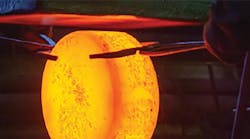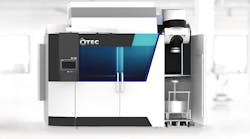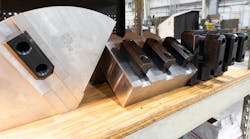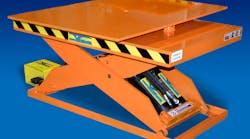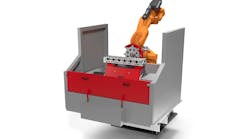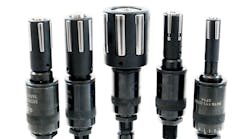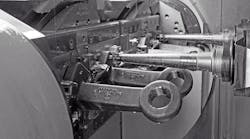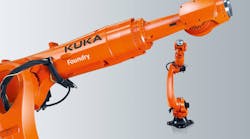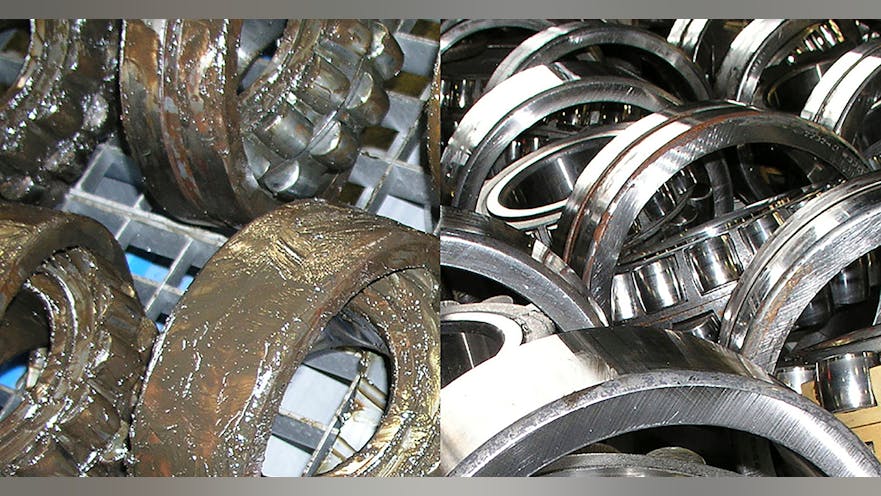Large-dimension forgings or other components represent significant value to both manufacturer and customer. Cleaning of railway components — bogies, wheelsets, wheel bearings, and motors — is important for fast and smooth processing of repairs, crack testing, maintenance and service. Long service lives and high mileage inflict a range of surface and sub-surface contamination on parts like these, and together with oil and rust these substances present a problem for service providers that clean such parts. The weight and dimensional challenges in handling such parts often mean that many cleaning systems cannot handle them.
A fast and economical cleaning technique was found for a maintenance plant of an Austrian railway. The plant decided acquired two cleaning systems from BvL Oberflächentechnik GmbH, Emsbüren, Germany, which develops systems for maximum cleanliness requirements in different sizes. It offers a range of capabilities for cleaning components as part of maintenance and quality testing programs.
After determining the cleaning requirements and the specific installation circumstances, and conducting extensive washing trials at the BvL Technology Centre, the manufacturer selected two BvL spray systems for cleaning large parts and railway bearings.
The first installation, the Pacific spray system for large parts, performs washing, rinsing, and drying of railway bogies in a single chamber. Once the electronic system control has been individually programmed for a specific part and the electric lifting gates are closed, the bogies, wheelsets and frames are cleaned in the treatment chamber by an integrated spraying device with an oscillating nozzle system with wide spray nozzles. Two powerful circulation pumps supply water to the nozzles. After this treatment, the parts are rinsed in the same chamber by a separate spraying system.
Washing is done with cleaning water heated up to 75°C (167°F), ensuring energy-efficient drying of the cleaned parts using intrinsic heat.
The second installation, the Niagara system, also washes railway bearings and bearing housing, also in a single chamber. Fine sand on the bearing surfaces is removed, without residue, to reduce premature wear of axle bearings. The bearings are attached to special parts baskets and cleaned in a washing chamber. A special nozzle system with flat spray nozzles executes intensive surface cleaning while the parts basket rotates around a horizontal axis. Additional cleaning is effected by complete flooding of the chamber.
The condition of the washing and rinsing water is important for reliable, constant cleanliness of the cleaned parts. To ensure this, the medium is transported on a belt filter to remove any solids. Tank rinsing in the pressure line of the washing and rinsing pump, and a ring line above the tank floor, draw these solids upward in both tanks as a preparatory measure. A plate phase separator additionally provides oil separation.
All BvL systems are equipped with a standard (Libelle Fluid Control) sensor system to permanently measure the contamination level of the cleaning fluid by measuring light absorption. This allows the operator to identify immediately when a bath change is required.
After filtering, the wastewater is reintroduced into the system, saving as much energy and water as possible in addition to ensuring a long bath life. Additional, flexible insulation on the pipes, filters, and tank covers increases the output of thermal energy. In addition to reducing energy costs, the BvL systems meet the local environmental protection requirements.
With the BvL Pacific and Niagara systems, the maintenance plant has adopted cleaning technologies that meets all its requirements: Both systems achieve very good cleaning results, and because it is fully automatic the process handling user-friendly. Because the large parts are positioned in a pit for the cleaning process, the system is easy to access for use and for maintenance.
